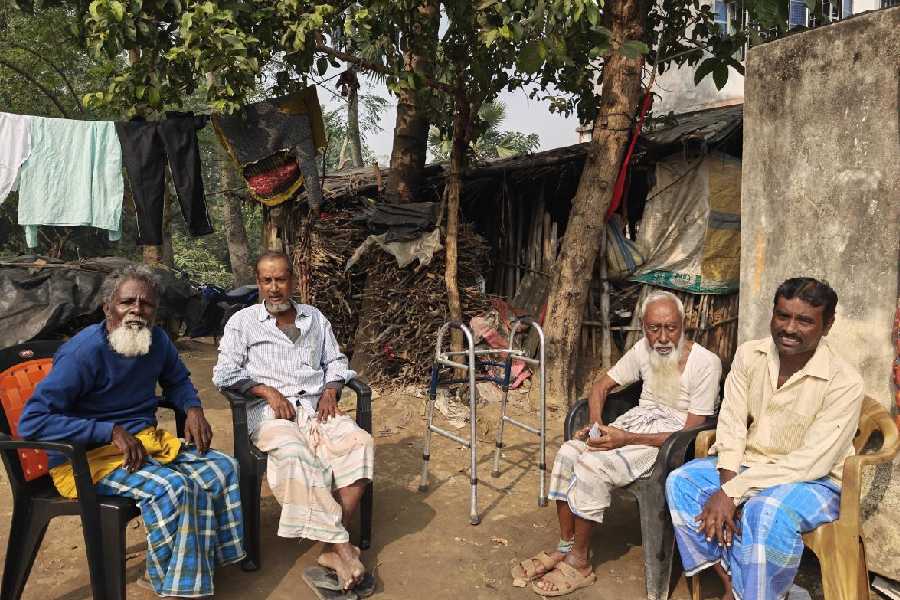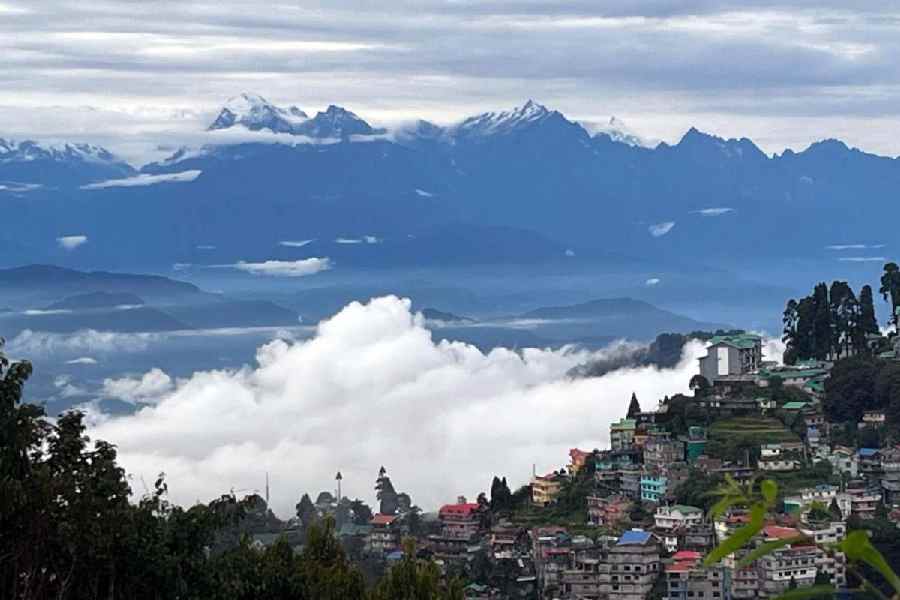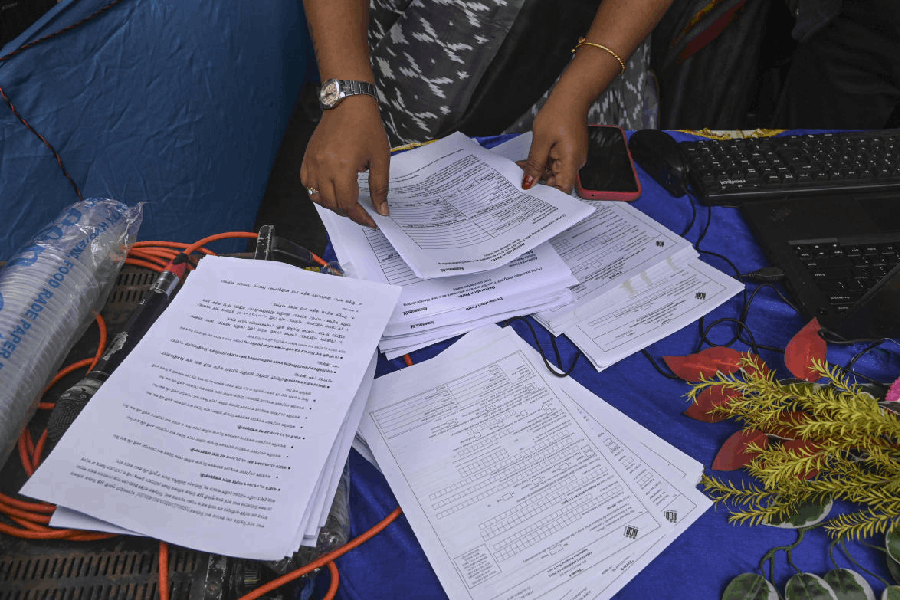Narendra Modi’s spell on the citizens of India, now the world’s most populous nation, is well-documented. What merits greater scrutiny is the prime minister’s magnetic pull on the inanimate world. For instance, the camera, an exanimate entity, finds Mr Modi irresistible: wherever the prime minister goes, the camera follows. Thanks to the camera’s enchantment with Mr Modi, ordinary Indians have had the privilege of seeing — consuming — vignettes of the prime minister’s engagement with worlds private and spiritual. Mr Modi’s affectionate moments with his mother have, thanks to the poodle-like camera, been recorded for posterity. Astonishingly, the camera had even made its way inside a cave in Kedarnath, recording images of the prime minister in meditation.
What, however, has gone ignored in many of these instances — Mr Modi’s larger-than-life image must be the cause — is the presence of the proverbial elephant in the room: the camera-crew. The prime minister’s allergy to share the photographic frame with other mortals is not unknown. The creators of his plentiful images must, therefore, remain invisible to India and to the world.
But their invisibility does not make them marginal. On the contrary, it accords them with a rather unique identity: that of a presence in absentia. Photography, a relatively late entrant to the club of the visual arts, is a mode of representing reality. Its aim is to make life — moving or still — visible. Yet, it has a layered, complex and evolving relationship with all that remains unseen. May — the national month of photography in another democracy— is perhaps a good time to reflect on the complementarities and the conflicts that photography, a totem of presence, shares with absence. Or should the credit for such reflections go to the prime minister’s cameramen who remain banished outside the frame?
Be that as it may, there is a marked duality as well as an interesting contradiction in photography’s bond with absence.
Absence has been known to reinforce the strength of photography. Some years ago, the French newspaper, Libération, published an entire issue sans photographs, with the eerie edition bearing “empty frames that create[d],” in the words of one of Libération’s employees, “a form of silence” meant to convey the power of images.
Photography’s anomalies, such as its inherent undemocratic character, has, at times, also been exposed (pun intended) by absence. Consider the motive of the exhibition, Absence of Subject, that was put together by the artist and photographer, Michael Somoroff. Conceived of as a homage to the legendary German documentary photographer, August Sander, Absence of Subject featured images taken by Sander but with the principal protagonist erased in each photograph. The result was the democratisation of the relationship between the margin and the centre of the photographic frame: the effacement of the ‘subject’, thanks to a digital tweak, foregrounded those visual elements that had been relegated to the background, transforming all that is deemed ‘secondary’ into the focal point of the viewers’ gaze. With his ingenious experiment of absenting the centre, Somoroff had helped shift our gaze to the peripheral.
Arguably, absence’s greatest gift to photography has been its stirring — indeed dismantling — of one of the most fundamental philosophical premises associated with the visual medium. Photography’s association with posterity, with permanence, lends it a peculiar cultural weight. A photograph is seemingly the record of a moment that is frozen in time; it is a medium of freezing time itself, if only for a second. But Camera Lucida, Roland Barthes’s exemplary “[r]eflections on [p]hotography”, dismisses the secure inference of the image being a testament to immortality. If, say, we were to view our — changing — selves in photographs taken over the years (just as Barthes did with the photographs of his mother captured over a period of time), viewed together, this montage of a shifting — diminishing — physical form, emblematic of the journey of a life, would, in effect, be an attestation to mortality, transience and — the greatest absence of all — death. Susan Sontag expressed photography’s communion with absence as succinctly when she wrote, in On Photography, “Photography is the inventory of mortality… Photographs state the innocence, the vulnerability of lives heading toward their own destruction, and this link between photography and death haunts all photographs of people.”
Is the modern photograph, overwhelmingly digital in form, being haunted by obliteration of a different kind — the death of absence? This is not a metaphysical question: for the enquiry is driven, as is everything these days, by data.
This is decidedly an era that heralds the triumph — the tyranny — of the visual culture. It has been estimated that five billion photographs are taken every day. As of 2023, of the estimated five billion photographs taken daily, 93 million are ‘Selfies’, with Millennials creating the lion’s share — 55% — of these desultory images of the countenance. But the Selfie, a speck on the horizon of visual production at present, is expected to mutate, just like a virus, into a dark, futuristic cloud. A Forbes article has predicted that the photographic Selfie, the flavour of our times, would, in its second coming, change to a video Selfie and, in its third-generation, be replaced by Selfies integral to the futuristic culture of augmented reality, enabling users to transfer their physical forms, with a technological sleight-of-hand, across geographies. This Selfie Economy, where the digital and the real would converge in mysterious — chaotic — ways is, apparently, only a few years away.
But narcissism would still be the beating heart of this new-age photograph, just as is the case today. The centrality of the Self — literally and metaphorically — to the contemporary and futuristic photograph and the consequent obliteration of all else, including absences, is indicative of a narrowing, an aesthetic as well as ethical contraction, of the creative, empathetic gaze.
Michael Somoroff, that elegant archivist of absences, margins, and the background — all that is residual — in a photograph would be mortified by this future of photography. It is improbable that we and our prime minister — the clan of camerajeevis — would share Somoroff’s horror at the slow death of absence in the photograph.
uddalak.mukherjee@abp.in











